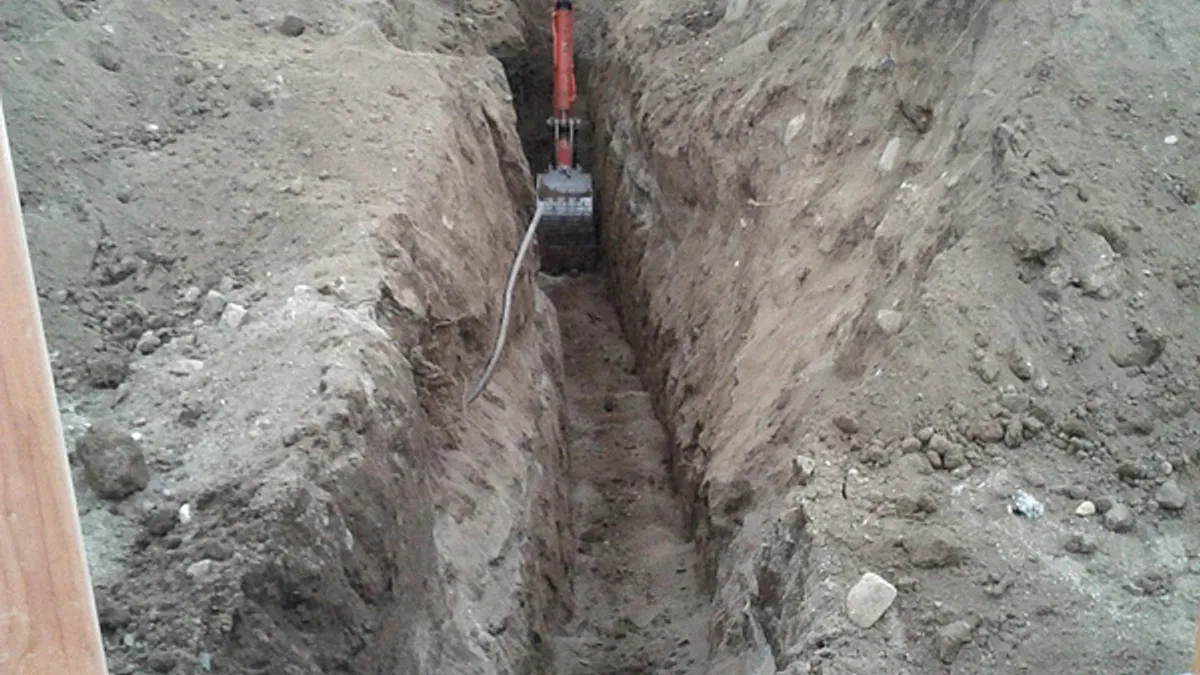Dive Brief:
- The Occupational Health and Safety Administration announced Thursday that trench fatalities — 23 so far this year — have doubled since 2015.
- The agency used a June trench death in Ohio to highlight this statistic. A 33-year-old employee of KRW Plumbing LLC was digging a 12-foot trench in June of this year when the walls collapsed, burying him under what OSHA characterized as "thousands of pounds of dirt."
- OSHA investigators said KRW did not provide proper trench cave-in protection, cited the plumbing company for two willful and two serious safety violations and levied a $274,359 fine.
Dive Insight:
According to OSHA, working in trenches and excavations is one of the most dangerous construction activities, as 1 cubic yard of dirt can weigh as much as 3,000 pounds, greatly increasing the chances of being crushed and killed in a collapse.
Ken Montgomery, OSHA's area director in Cincinnati, said that among the actions excavating companies need to take in order to ensure employee safety are:
- Installing trench boxes and shoring in order to prevent unexpected soil movement
- Keeping soil and other materials at least two feet from the edge of a trench to prevent it from falling back into the trench
The Manhattan District Attorney's office also launched its own campaign for trenching and excavation safety with its prosecution of New York City-based contractor Harco Construction in the death of 22-year-old Carlos Moncayo. The worker died in an excavation collapse on a Harco project, and the general contractor was found guilty of manslaughter and criminally negligent homicide. Prosecutors maintained that Harco did not provide proper trench protection, and the court took the unusual move of requiring Harco to pay for a public safety television ad. Harco told the court it would not comply with the order and planned to appeal the verdict.
Increased construction activity across the U.S. has come with heightened attention to safety incidents. The New York City Department of Buildings, for example, issued 23% more stop-work orders between January and June 2016 than it did in the same period last year.













